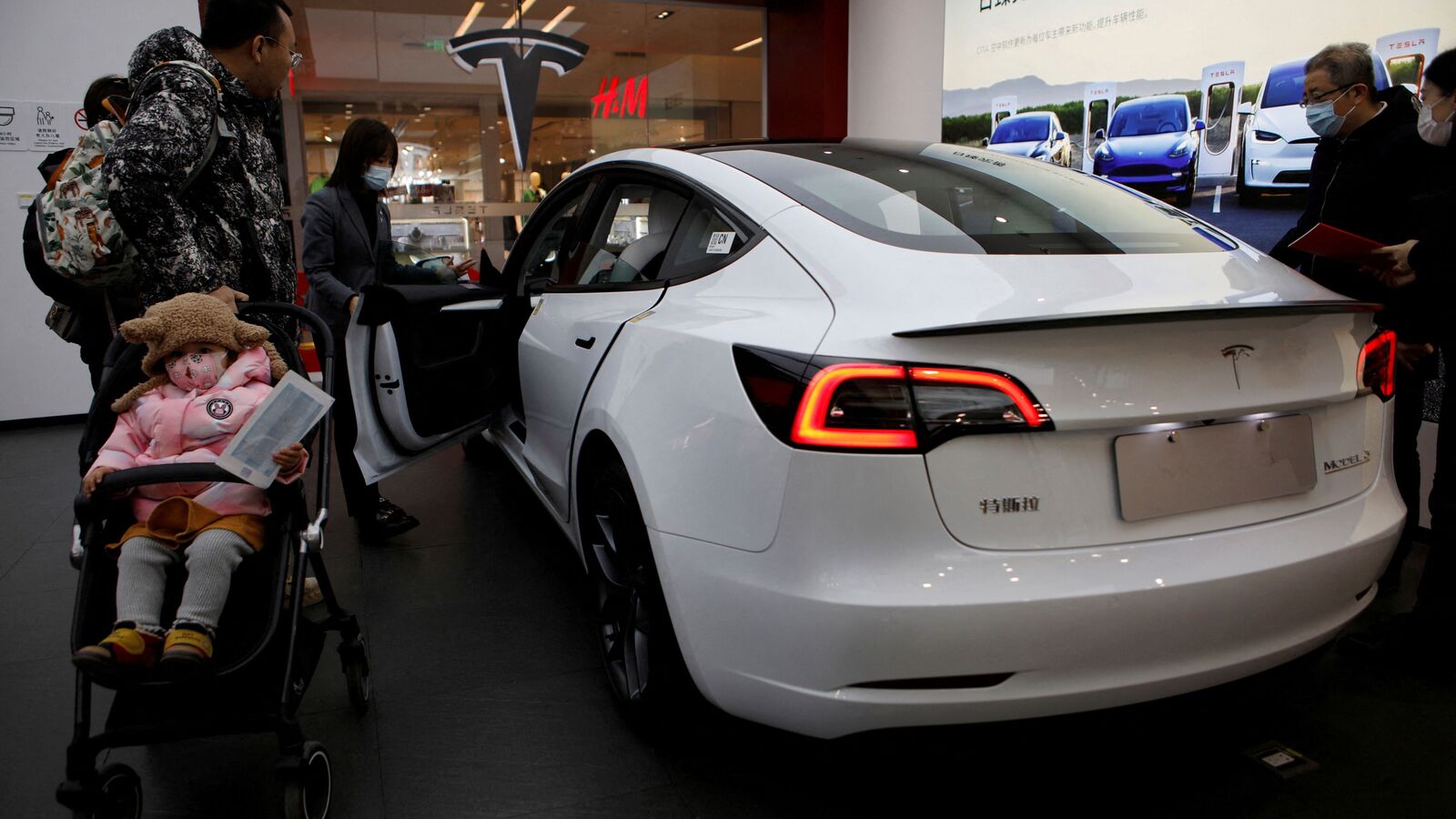Most immediately, Tesla’s price cuts in January led to an 18% increase in deliveries of cars made in China from December. Analysts say Tesla’s fat profit margins allow it to wage a price war with rivals in China and elsewhere.
But they say Tesla has lagged behind Chinese rivals in introducing new models, improving navigation systems and adding luxury interiors or white-glove customer service to meet evolving consumer preferences for electric vehicles.
“Tesla is facing a serious problem with a very limited product portfolio,” said Cui Dongshu, secretary-general of the China Passenger Car Federation. “Its slow response to Chinese consumer preferences has left Tesla in a very passive position, relying on a few means such as price cuts to remain competitive.”
Even Tesla CEO Elon Musk himself has admitted that China is where his company is likely to face the toughest competition.
Tesla did not respond to a Reuters request for comment on its China operations. Tao Haiyan, Tesla’s vice president of external communications in China, previously said the price cuts in China reflected engineering innovations and responded to Beijing’s call to encourage economic development and consumption.
The China Association of Automobile Manufacturers expects sales of electric and plug-in hybrid vehicles to surge 35% to 9 million by 2023, accounting for nearly a third of total new car sales in China.
While Tesla’s sales in China, its second-largest market, have increased, its market share has also declined. Its share of China’s EV market fell by a third from 15% in 2020 to just 10% in 2022, according to the CPCA.
Tesla offers two models in China, the Model 3 sedan and the Model Y crossover. This keeping it simple drives scale and keeps costs down.
After the most recent price cuts, the Model 3 starts at about $34,000 and the Model Y starts at $38,000. But Chinese car shoppers have been pulled out of showrooms this year after the country’s draconian COVID-19 restrictions ended, and they’re being courted by rivals offering a wide range of alternatives.
BYD, which sold more globally than Tesla last year, has a market capitalization well over $100 billion and offers more than 60 different versions of electric and plug-in hybrid vehicles. Much smaller but more ambitious peer Nio has grown from two models to six in the same period and plans to launch five more this year.
“The aging product line is a real problem for Tesla,” said Yale Zhang, managing director of Shanghai-based consultancy Automotive Foresight. “Once BYD and other EV start-ups follow suit with price cuts, the impact of Tesla’s price cuts may disappear in the blink of an eye.”
U-turn banned in Tiananmen Square
Tesla’s Autopilot software and navigation system, touted by Chief Executive Elon Musk as a competitive advantage, have also been criticized by customers for slow and buggy updates on Chinese roads. Luxury EV buyers who hire drivers are less willing to pay more for software.
Chang Yan, a 34-year-old Chinese auto blogger who was one of the Model 3 buyers in China in 2018, said his car still required him to make a U-turn on the heavily guarded Chang’an Avenue near Tiananmen Square, a move that was forbidden.
“This is in stark contrast to Nio, (EV brand) Xpeng and Li Auto, whose navigation aids work almost flawlessly,” said Zhang, who also drives a Nio sedan.
Tesla has been considering shifting its marketing approach in China to focus more on energy efficiency and practical features rather than cutting-edge features, a person familiar with the matter said.
The company has also been studying how Chinese rivals led by BYD can win customers in showrooms, especially in smaller cities, the person said, speaking on condition of anonymity.
Point 1: BYD made sure that the bottled drinking water provided to showroom visitors is warm in winter, in response to local preferences.
Tesla promoted China Chief Executive Tom Zhu to head global sales and production earlier this year and also gave its Chinese sales team a more direct line of product development engineers to provide local feedback, people familiar with the matter said.
less is more?.
To be sure, Tesla’s design aesthetic, including its sparse interior and synthetic leather, still appeals to many.
Cui Yang, a 31-year-old doctor who bought a Tesla in Beijing after the recent price cut, said he was attracted by the “minimalist interior style and sense of technology”.
Chinese brands like Nio and Zeekr, on the other hand, tout their smooth nappa leather and traditional luxury features like seats with massage functions, aiming to provide the same experience for passengers and drivers.
Some EV makers believe the premium segment will grow rapidly in the coming years.
Li Auto is aimed at EV buyers looking for a car that can transport the family, and who expect to pay more than Tesla is currently pricing, which starts at about $44,000 and is expected to represent a sales category of 10 million by 2025. market sales of cars.
Then there’s the “buy local” challenge facing Tesla.
Chinese consumers like Lin Wenwei, 50, want to support a Chinese brand — even though Tesla makes the electric cars it sells in China.
“I’ve always been more inclined to buy domestic electric car brands for the national industry,” Lin said as he tried out the Seal sedan for his son at a BYD dealership on the outskirts of Shanghai, and bought a BYD Dolphin hatchback for himself.
First published date: Feb 14, 2023 at 09:52 AM CST
https://auto.hindustantimes.com/auto/electric-vehicles/in-china-tesla-could-win-electric-vehicle-price-battle-but-lose-the-war-41676348338160.html
